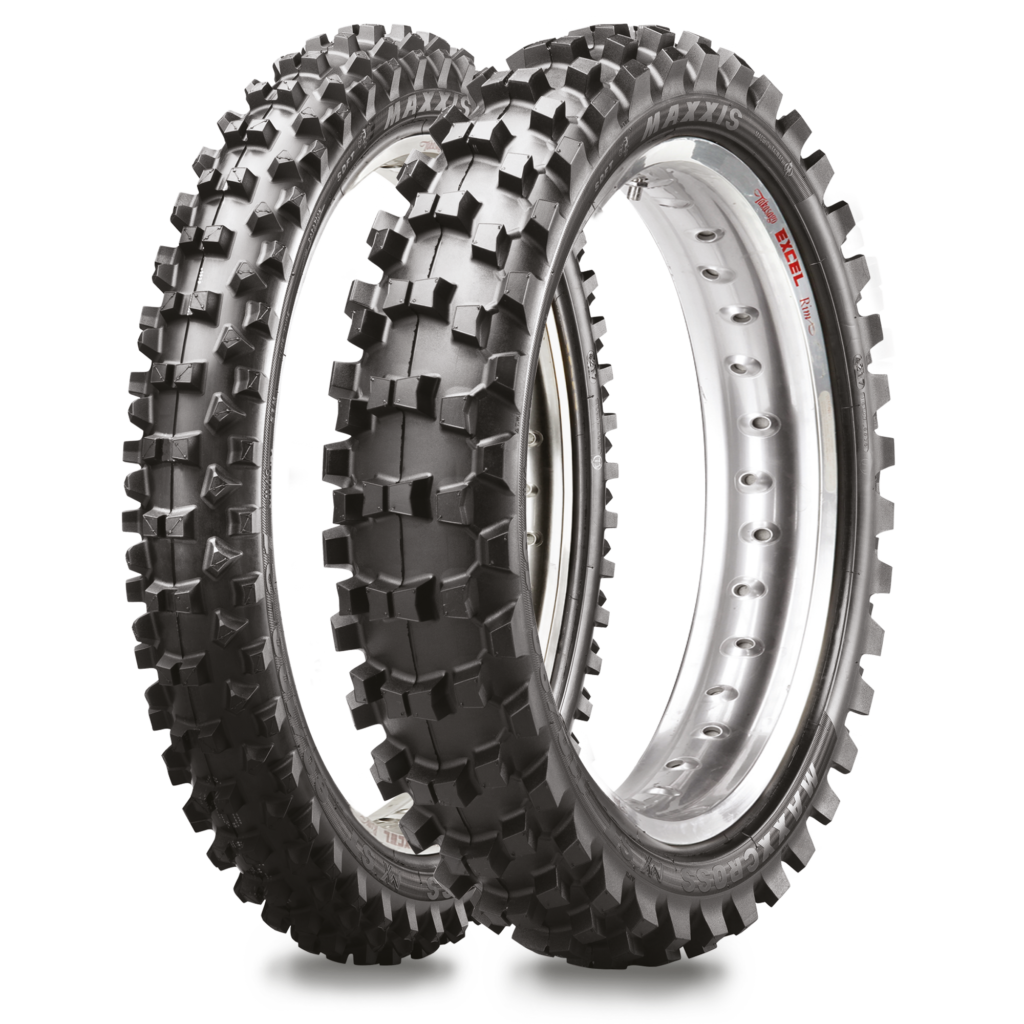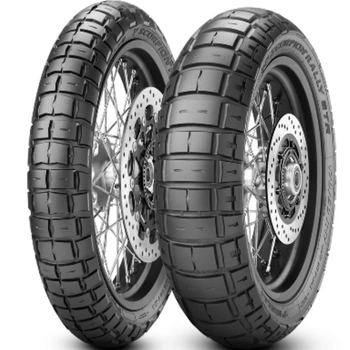Everything about the Necessary Bike Tyre Overview for Optimum Bike Upkeep and Efficiency
The Essential Bike Tyre Overview functions as a necessary source for motorcyclists looking for to enhance their bike's efficiency and safety and security. motorcycle tyre guide. It supplies understandings into various tyre types and specifications that influence handling and durability. In addition, comprehending proper upkeep techniques can significantly extend tyre life. Nonetheless, lots of cyclists forget vital factors that influence their riding experience. Exploring these facets can result in notified decisions that eventually enhance both safety and security and pleasure when driving
Understanding Motorbike Tire Types
When choosing bike tires, understanding the different kinds available is vital for peak efficiency and security. Motorcyclists run into various tire classifications, each made for certain riding conditions and styles. For example, sporting activity tires stress hold and responsiveness, making them ideal for high-performance bikes and track usage. Exploring tires, on the other hand, concentrate on longevity and comfort, suitable for long-distance experiences. Off-road tyres feature aggressive tread patterns, providing grip on irregular surface areas, while dual-sport tyres provide convenience for motorcyclists who change between on-road and off-road conditions.Additionally, cruiser tyres are created for security and a smooth experience, satisfying the unique needs of cruisers and visiting bikes. Recognizing these categories allows cyclists to pick tyres that align with their riding practices and environmental conditions, ultimately boosting both security and performance. Each kind plays a vital function in guaranteeing an exceptional riding experience customized to the individual motorcyclist's needs.
Key Tire Specifications Described
Picking the ideal motorbike tyres involves greater than simply comprehending the various kinds; it also calls for experience with crucial requirements that affect performance and safety and security. Secret requirements consist of tire dimension, which is generally expressed as a collection of numbers suggesting width, facet proportion, and rim diameter. This code is necessary for ensuring compatibility with the motorcycle.Another important specification is the lots index, showing the optimum weight a tire can sustain. The rate rating signifies the optimal speed a tire can safely deal with, crucial for efficiency enthusiasts.Additionally, step pattern and rubber compound impact grip, security, and wear characteristics. Tires with a softer compound often tend to give far better grasp yet wear quicker, while more difficult substances last longer but might give up traction. Understanding these specs enables riders to make informed choices, boosting both their safety and riding experience.
Just how to Pick the Right Tyres for Your Bike
Just how can a cyclist guarantee they select the appropriate tyres for their bike? Picking the ideal tires includes comprehending the certain requirements based upon riding weather condition, design, and terrain problems. Cyclists should first seek advice from the motorcycle's guidebook to recognize suggested tyre dimensions and specifications.Next, they have to review the kind of riding they prepare to do-- whether it's commuting, touring, or off-road. Each category has unique tyre layouts tailored for height performance.Additionally, cyclists must examine tread patterns; much deeper treads offer far better hold in wet conditions, while shallower treads boost stability on dry surfaces.Lastly, it is vital to take a look at the tire's construction and product, as these aspects affect resilience and handling (motorcycle tyre guide). By reviewing these aspects carefully, a cyclist can with confidence choose tires that improve safety, efficiency, and overall riding experience
The Importance of Tire Pressure and Upkeep
Tyre pressure is a considerable facet of bike maintenance that straight affects safety and security and performance. Preserving the proper tire pressure assurances perfect call with the roadway, improving grip and security during rides. Under-inflated tires can bring about raised rolling resistance, causing inadequate gas effectiveness and unnecessary endure the tyres. On the other hand, over-inflated tyres might decrease and create a harsh adventure grip, especially in wet conditions.Regularly monitoring tyre pressure, preferably before each experience, is essential to preserving the motorcycle's general efficiency. Cyclists should refer to the supplier's specs for the recommended stress levels. Additionally, monitoring tyre condition and readjusting pressure according to tons and riding conditions is crucial for safety and security. Proper tire upkeep adds to expanded tyre life-span, better handling, and enhanced stopping performance. Inevitably, regular interest to tyre pressure and maintenance is crucial for guaranteeing a satisfying and risk-free riding experience.

Identifying Indicators of Tire Put On and Damages
Recognizing indications of tire wear and damages is crucial for maintaining motorbike safety and security and efficiency. Secret indicators consist of examining step depth and conducting a complete visual assessment for any kind of visible damage. Attending to these elements immediately can avoid further difficulties on the road.
Step Depth Analysis
As bikers take to the roadways, the significance of evaluating step depth can not be overemphasized, because worn or damaged tyres can greatly affect safety and performance. Tread deepness straight impacts grip, stopping range, and cornering security. To evaluate walk deepness, cyclists must use a tread deepness gauge, measuring the grooves at numerous factors throughout the tyre. A deepness of 2mm or much less indicates significant wear and requires instant replacement. In addition, bikers can utilize the "dime test" by inserting a coin into the walk; if the top of Lincoln's head is visible, the tyre is also put on. Normal checks assure peak grasp on diverse roadway conditions, promoting a safer riding experience while improving the general handling of the motorbike.
Aesthetic Damages Assessment
Inspecting motorcycle tyres for aesthetic damage is crucial for preserving safety when driving. Bikers ought to on a regular basis examine tyres for indications of wear such as cracks, bulges, or punctures. Irregular wear patterns may suggest positioning problems or inappropriate inflation, causing endangered efficiency. Additionally, looking for international items installed in the tread can protect against prospective blowouts. Cyclists should pay close focus to the sidewalls, as any kind of abrasions or cuts can deteriorate the tyre's framework. Making certain that the step is free from excessive wear is crucial for excellent grasp. Regular aesthetic assessments not only improve safety but also lengthen the life of the tyres, ensuring a smoother and much more trusted riding experience. Timely detection of damage can stop pricey repair work and mishaps.
Seasonal Tire Considerations for Different Riding Problems
When taking into consideration bike tires, seasonal conditions play an important role in efficiency. In damp weather condition, tyres developed for boosted hold and water displacement become vital for safety and security. In addition, winter riding needs specific tyre characteristics to guarantee peak grip on chilly, potentially icy surface areas.

Damp Climate Performance
Wet weather present unique difficulties for motorcyclists, making the choice of tyres essential for security and performance. Tires made for damp climate commonly feature much deeper footsteps and specialized rubber compounds that improve grip on slippery surfaces. These tires are crafted to direct important link water away, minimizing the threat of aquaplaning and boosting security during rain. Riders should think about tires with a well balanced style, supplying both grip and sturdiness in damp conditions. In addition, keeping correct tire pressure is important, as under-inflated tyres can endanger efficiency. When encountered with rain-soaked roadways, normal inspections for wear and damage are essential to guarantee peak function. Choosing ideal wet-weather tires ultimately adds to a much safer and extra pleasurable riding experience.
Winter Season Tyre Requirements
Riding in winter months conditions positions distinctive challenges that demand details tyre requirements to guarantee security and performance. Winter motorbike tyres are created with much deeper footsteps and softer rubber substances, offering enhanced grasp on cold and slippery surfaces. This is essential for keeping grip on ice, snow, and wet roads. In addition, winter tires often include a special step pattern that helps channel water away, minimizing the threat of aquaplaning. Bikers need to also think about the tyre's temperature level strength, as efficiency can reduce in severe cold. It is necessary to regularly examine tire stress, as it can drop substantially in lower temperatures. By picking the ideal winter tires, cyclists can navigate harsh conditions with greater self-confidence and stability, making certain a safer riding experience.
Tips for Appropriate Tyre Storage Space and Long Life
Appropriate tyre storage space is crucial for maintaining their long life and performance over time, as disregarding this element can lead to early wear and tear. To assure excellent storage, it is important to maintain tyres in an amazing, dry setting far from direct sunlight and sources of warmth, such as radiators or heaters. Excessive heat can create rubber compounds to damage down, compromising the tire's integrity.Additionally, tires need to be saved upright or stacked horizontally, depending upon their type. If stacked, it is recommended to rotate them periodically to stop flat places. Proper inflation is likewise essential; tires ought to be pumped up to the producer's recommended stress to avoid deformation.Lastly, it is valuable to cover tyres with a protective product to shield them from dust and pollutants. Complying with these pointers will certainly aid extend the life of bike tires, ensuring they remain reliable and secure for use when the riding period returns to.
Frequently Asked Inquiries
How Commonly Should I Change My Bike Tyres?

Can I Mix Different Tire Brands on My Motorbike?
Mixing various tire brand names on a bike is usually not recommended. Variants in tread patterns, rubber compounds, and efficiency attributes can result in unforeseeable handling and jeopardized security, potentially enhancing the threat of accidents.
What Is the Lifespan of a Motorcycle Tyre?
The life expectancy of a motorbike tyre normally varies from 5,000 to 15,000 miles, affected by aspects such as riding surface, design, and tyre maintenance. Regular evaluations can assist guarantee peak efficiency and safety and security throughout their use.
Just how Do I Take Care Of Old Motorbike Tyres?
When disposing of old bike tires, they should be taken to marked recycling. Lots of local waste monitoring services also use tire disposal programs, guaranteeing eco-friendly handling and conformity with regional laws pertaining to tyre waste.
Exist Any Type Of Tyre Guarantees Available for Bikes?
Several motorbike tire makers offer service warranties that cover problems in product and handiwork. The specifics differ by brand name and design, so it's necessary for motorcyclists to review private service warranty terms prior to acquiring new tyres. Off-road tires feature aggressive step patterns, offering grip on uneven surface areas, while dual-sport tires supply adaptability for motorcyclists who move between off-road and on-road conditions.Additionally, cruiser tyres are developed for security and a smooth experience, providing to the one-of-a-kind demands of cruisers and visiting bikes. Each category has unique tire styles customized for top performance.Additionally, cyclists must evaluate step patterns; much deeper footsteps supply much better hold in wet problems, while shallower treads improve security on dry surfaces.Lastly, it is essential to take a look at the why not find out more tire's construction and material, as these factors affect resilience and handling. Appropriate tire upkeep adds to extended tyre lifespan, better handling, and enhanced braking efficiency. Proper rising cost of living is likewise important; tyres ought to be inflated to the manufacturer's advised stress to avoid deformation.Lastly, it is useful to cover tires with a safety material to secure them from dirt and contaminants. The life-span of a motorbike tire commonly ranges from 5,000 to 15,000 miles, influenced by factors such as riding terrain, design, and tire maintenance.